I get a lot of emails from beginner photographers who have just purchased their first dSLR and are chomping at the bit to shoot some great photos, but don’t know where to start. Whether you’ve moved from a film SLR or up from a point and shoot camera, the first thing you should do is read your manual! Set aside some time and learn what all those buttons and dials do. It’s lame and confusing I know, but learning how to move around your camera is your first major obstacle to taking great pictures.
One of the most common mistakes I see from beginners is underexposed images taken in low light situations, i.e., poorly lit room, music venue, restaurant, or outside at dusk or night. These photos are often blurry, noisy, dark, or blown-out with an on-camera flash. But don’t fear! Everyone makes these mistakes. The good news is all you have to do is learn a few technical things and you’ll be taking awesome exposures in no time.
Good photographs need good lighting. Achieving good lighting requires a combination of many different skills and tools.
Here are 5 ways you can get better exposures in low light:
1. Increase your aperture.

50mm, f/1.4, 1/125, ISO 200.
The lower the f-number, the more light is let into your camera. I know this seems backwards at first, so play around with your camera’s Av (or Aperture Priority mode). Take shots of one subject with different f-stop setting and you’ll start to understand how aperture can effect your image.
What to watch for: Remember that as you lower your aperture, the Depth of Field (DoF) becomes shallower. Using a nice wide aperture (f/4 or lower, for example) is how you get a nice sharp subject with a blurry background. So if you are shooting with an aperture of f/1.4, you are going to have to nail your area of focus. It’s also good if you know the widest aperture of your lens. For instance, the lens I use the most in low light is the 50mm with a maximum aperture of f/1.4. Just in case you forget, it’s actually written right on your lens!
2. Decrease your shutter speed.
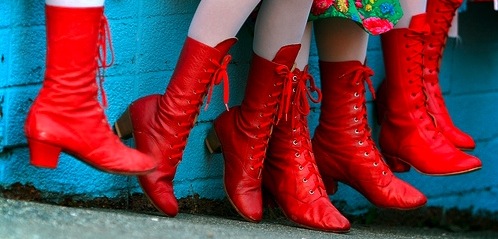
Canon 70-200mm IS, 135mm, f/2.8, 1/80, ISO 200.
This one is a bit easier to remember: The slower your shutter speed, the more light reaches the sensor. For example, 1/30 slower shutter, more light, 1/2500 faster shutter, less light. Easy peasy.
What to watch out for: Unless you are going for some kind of motion blur effect, you probably want your photos to be as crisp and sharp as possible. If you are hand-holding your camera and your shutter speed is too long, you are going to get blurry, shaky photos. To get your hand-held images tack sharp, there is a a good rule of thumb to remember:
The slowest shutter speed that can be used without blur is the shutter speed that is closest to the focal length of the lens that you are using.
Huh? Yeah that did sound confusing. Well, say you are using a 50mm lens, the lowest shutter speed you should use for hand-held shots is 1/50th. Of course, this is only a general guide. You can also push your shutter speed down lower if you steady yourself against a wall, or your camera on a table, or develop some serious Jedi mind-to-hand steadying powers. And if you have a magical money tree, obviously an lens with optical Image Stabilization (IS) will help a lot.
3. Increase your ISO.
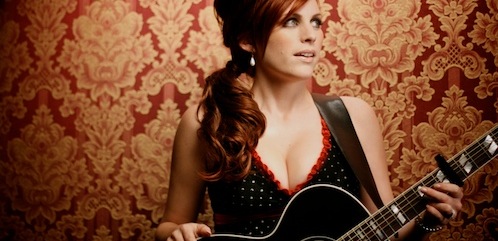
50mm, f/1.4, 1/30, ISO 400
The higher the ISO, the more sensitive your camera’s sensor is to light. If you increase the ISO your photos will appear brighter. Most entry level SLRs can shoot up to ISO 1600. Fancy pants SLRs like the Nikon D3 can get up much higher, like 6400. That’s serious business.
What to watch for: The huge downside to shooting with a high ISO is that your images will appear more grainy and noisy. In my opinion, increasing the ISO should be a last resort for getting a better exposure. Stay as low as possible and try shifting around the aperture and shutter speed before cranking the ISO. Also, learn the limits of your camera. On my little Xti (400D) I can’t shoot over ISO 400 without getting noise, but something like the Canon 5D Mark II is designed to work with high ISO settings with limited noise. Lucky dogs!
4. Use a Tripod.
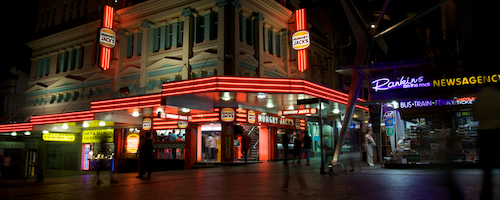
17mm, f/11, 6s, ISO 100.
Tripods are great little devices that steady your shots when light isn’t great. They also allow you to go with the ISO and aperture settings you want. The above image was shot at f/11 for 6s at ISO 100. Without a tripod that shot would have been a big blurry mess.
I know tripods aren’t fun to tote around. Trust me, I know. But, you don’t need a huge, expensive tripod when you are just starting. Just look for something sturdy, light and portable. Well, as portable as a big pointy, metal object can be. You can even find ones that come with little bags for extra portability. Actually, my mum, who is quite the seamstress, made a faux-vinyl tripod bag that works really well. I’m trying to convince her to write a DIY post about it for my blog. Maybe you can convince her.
Another option for a portable tripod is the Joby Gorillapod. These flexible guys have three articulated legs that can bend and wrap around things to shoot from almost anywhere: Rock ledges, tree branches, bike handles, even your head if you’re into that kind of thing.
There are 5 models ranging in size and how much weight they can hold. I suggest the SLR model for larger point and shoots like the G9 or LX3 and entry-level SLRs without a big telephoto lenses, and the SLR-Zoom for SLRs with serious glass. For people getting a bit more serious, any pro will tell you that there are two kinds of tripods: The kind that is cheap and easy to carry around, and the kind that works. I say spend what you can and make it work. A cheap tripod is better than no tripod, and if it’s small and light you’ll probably use it more.

35mm, f/4, 1/60, ISO 200, on-camera flash.
5. Using the on Camera flash.
Sometimes capturing the moment is the most important thing. I know hard to believe, but some people really need proof that they “hung out” with Wil Weaton at Comic-Con. Isn’t the experience enough? No, gotta share it with all of the internet do you? I have no idea about this compulsion you have. So, set that puppy to ‘Auto’ mode, say a little prayer, and fire away! Here’s hoping for the best.
What to watch for: The trouble with on-camera flash is that it almost never looks good. Just look through some of your Facebook friends’ photo albums (oh low blow): Washed out faces, harsh shadows, awful reflection on glasses, sickly blue colour balance, the list goes on and on. So here’s a few tricks to minimize what I call the “Facebook flash effect”:
- Dial down the intensity of the flash. If you’d read the manual, you’d know how to do this :P
- Set your white balance to flash.
- Tape of small piece of wax paper over the flash to diffuse the light.
With a few simple adjustments and a little bit of knowledge, you have the power to take great shots. I believe in you! So go forth and photograph amazing things!
Need a place to start? Here are some great rainy day photography projects.
Questions, comments, & things to add? I’d love to hear from you.
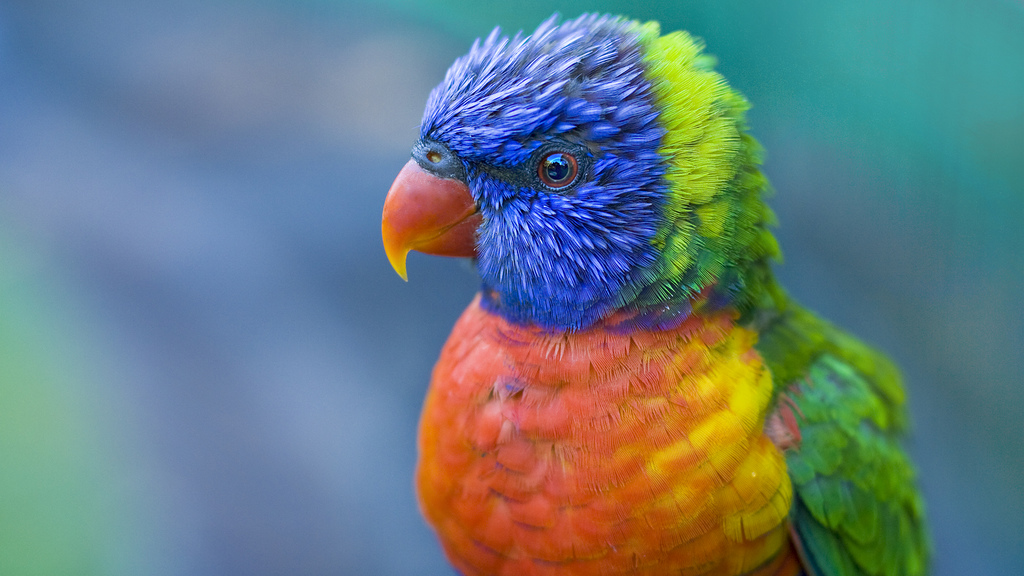
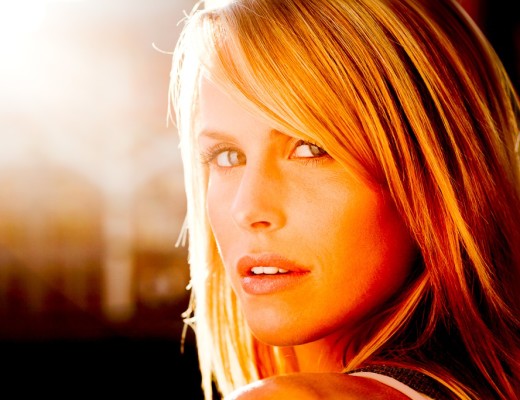
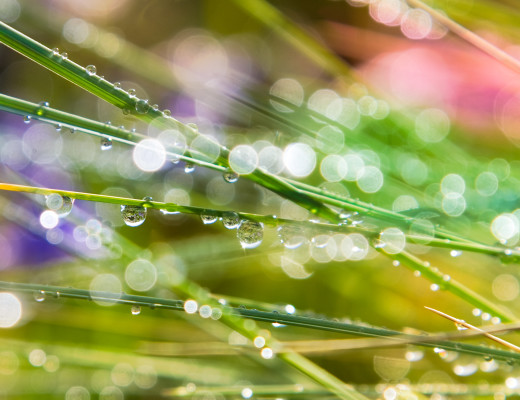
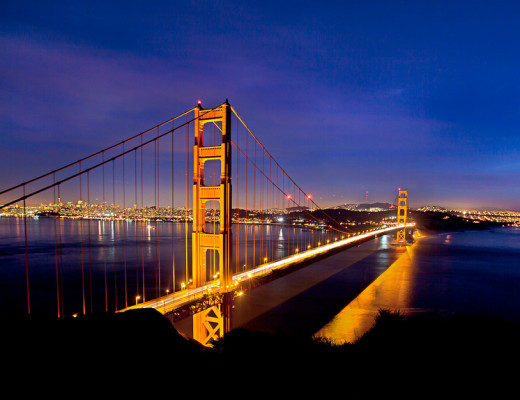
Ryan
January 29, 2009 at 4:46 AMThanks for these tips. They’re really useful. I’ve been having trouble with getting good shots in low light.
Looking forward to putting some of this into practice. :-)
Scuba Steve
January 29, 2009 at 5:41 AMI purchased my first SLR camera between Xmas and New Year’s. It is the Rebel XSi and have purchased a number of lenses. I have a new found respect for those that shot film well. To a couple of your points Lisa, I was a bit a geek and read most of the manual (but only absorbed half). What I found helped me a lot was I just went for drives and shot pictures of things. I am still beyond an amateur and have made some stupid mistakes but that got me “experience” shooting in high light, low light, night, motion, landscape, people etc.. I would spend 3 or 4 hours here and there doing this. To Pasquales point….I am still struggling with composition. Centering is not always the right choice and the rule of thirds confuses me a bit.
Ian
January 29, 2009 at 6:13 AMthanks heaps for this, i bought a D60 about 6 weeks ago and am still a total noob. It’s good to hear this stuff from as many different voices as possible – and there was some new stuff in there too…
nice shot of hungry jacks at the queen street mall too (yeah?). i live between the gold coast and bris – it’s nice to see things i recognise.
Patrick
January 29, 2009 at 8:14 AMThis is an excellently written summary for beginning photographers. Thanks for posting this.
Linking to: MostlyLisa’s Light Troubleshooting | PatCampbell.net
January 29, 2009 at 8:16 AM[…] A Beginner’s Guide to Troubleshooting Light […]
Derek K. Miller
January 29, 2009 at 9:59 AMOne neat solution for the on-camera flash is to make a diffuser out of a white translucent film canister, like this:
http://lifehacker.com/365157/turn-an-old-film-canister-into-a-flash-diffuser
Two things I recommend as first purchases for new DSLR owners are an inexpensive fast 50mm lens (like the one that took this photo) and a better flash unit that can bounce off the ceiling. Nikon’s SB400 is a decent option because it’s small and inexpensive, but of course some of the bigger units offer more flexibility.
Kiriakos
January 29, 2009 at 10:24 AMgreat tips, great site!!!
keep going ;)
Ian
January 29, 2009 at 10:54 AMLisa-
Thanks for the info! I usually just shoot and fidget with the dials as i go until I get what looks okay then fix it in lightroom. Lets hear it for post production!
Chris Pugh
January 29, 2009 at 11:12 AMThanks Lisa! I’ve been shooting for a while now and have figured out most of these settings on my own. It was nice to read a well written explanation of it all!
bc
January 29, 2009 at 1:52 PMgreat tips! lighting is so important for beginners to understand, and “see”
fyi the other day I came across some cheap and easy DIY tips for better light with flash photography, see:
http://digital-photography-school.com/diy-flash-and-lighting-hacks-for-digital-photographers
some of the tips require an external flash but others make use of your pop-up flash, or external lights. I particularly like tip#2 in the above link for closeup w/flash – it’s kinda goofy looking but it works, and takes no space in your bag! and if you do have an external flash unit, tip #9 is a must-do.
a number of the tips are similar to your suggestion to put tape over your flash – the goal of all these kinds of tips is to soften the light from the flash by making the light source seem larger and less direct
have fun!
Jon
January 29, 2009 at 3:19 PMThis was amazingly helpful…thank you.
As an amature photographer, I tend to run into these little problems all the time. I think my shot compositions are great, but often times my shots can come out grainy, blurry, too dark, too light, etc. I’ll be printing this blog out imediatly, and can’t wait to apply your tips to my next photo outing! Thanks again!
James S
January 29, 2009 at 3:47 PMOoh. Wax paper. I’m going to try that one. I hate the on-camera flash, but sometimes, there’s just no choice.
Lewis Miller
January 29, 2009 at 3:49 PMI’d avoid the Gorillapod unless it’s maybe the new metal one. I’ve got the SLR Gorillapod and I barely trust it to hold my Panasonic FZ-50. I’ll use it to stabilize my camera in certain areas but usually with the camera strap still wrapped around me in case the legs give. It’s just not sturdy enough.
Copperchef
January 29, 2009 at 3:58 PMVery Nice write up Lisa. :)
I’d like to add that its also a good thing to experiment with using the flash outdoor on especially harsh sunlight days for portraits. Set it to a low power setting (-1 to -2 flash power depending on camera/flash) can be helpful with lightening dark shadows and adding a catch light to the eyes.
Happy shooting!
Joshua S
January 29, 2009 at 4:27 PMLisa,
Noticed that you use the Canon 1.4 50mm. I purchased the 1.8 50mm right after getting my camera last year. Is there a big difference in quality between the two lenses? I’m trying to build up my lens cache, so every dollar counts . . .
Ben Klaus
January 29, 2009 at 4:53 PMI guess it isn’t really a true beginner subject, but the faster you learn to use the histogram the better!! This really improved my photography!!
Bill
January 29, 2009 at 7:13 PMHi Lisa,
These are good tips for beginners, but I would suggest using lowest ISO, like 100 or 50, and extending the exposure time with the shutter open (bulb). You get the best of both worlds that way, great saturation and low noise.
To increase the depth of field, stop the shutter down to f8.0 or more, if possible.
Lawrence
January 29, 2009 at 9:12 PMLisa – This post is awesome! I have read so many books, over the last year and they have helped but it was never as clear as this. It’s truly broken down so a person just starting out in Photography can grasp it. Thanks and your shots alway look great!
Weekend Perusing: Beginner Tips, Bad Flickr, and Camera Phones | Your Photo Tips
January 30, 2009 at 5:01 AM[…] Lisa has a great intro to beginner photography article. So if you’re a total newbie, you should check it […]
Tawcan
January 30, 2009 at 11:24 AMGreat tips. I really need to get myself a tripod… sturdy but perhaps light enough so I can take it with me out on my outdoor trips.
Aimee Greeblemonkey
January 30, 2009 at 3:07 PMGreat tips! I forwarded this post to several friends who were looking for tips like this.
Herb
February 6, 2009 at 3:44 AMThanks for giving me the kick in the pants to dig out my tripod, and experiment with lower iso and varying aperture settings! I’ve been a bit conservative since picking up the slr a few months ago.
Daniel
February 7, 2009 at 12:16 PMThis is my new favorite website. I LOVE it!
kate
February 8, 2009 at 9:51 PMthanks for all the photography tips. i will certainly be putting them to use
Robin Kaspar
February 14, 2009 at 8:04 AMThanks for this, Lisa. I have the 1st gen Digital Rebel (300D) and I wasn’t familiar with being able to fiddle with the intensity of the on-camera flash. I got out the manual, couldn’t find anything. So I found something on the web that told me what I was looking for, downloaded the user manual for my camera and did a search on “Flash Exposure Compensation.” Nothing. I downloaded the user manual for your camera, searched and there it was. So now I’m reasonably sure :-) that I don’t have this functionality. A friend has a diffuser that he’s happy with, I may try it as an inexpensive option until I figure out if I should get a speedlite.
Pushkar Arora
February 16, 2009 at 5:01 AMGreat tips. These are surely gonna help for the lots of outdoor photography I am looking forward to this year.
Ash
March 30, 2009 at 11:38 AMAmazingly put!
Did have a question on your experience shooting with a 50 1.4 vs s 85 1.4 & 1.8. I am trying to decide which lens to get from these three and would love to hear your thoughts. Primarily to shoot editorial fashion type pictures.
Madbid
July 15, 2009 at 7:14 AMawesome site.. u rock my pics :)
robb
July 30, 2009 at 9:16 AMa must read for beginner.
great tutorial.
Mostly Lisa : Photography, Videos, & Geeky Stuff. » Entry » How to Take Better Portraits
November 9, 2009 at 1:08 PM[…] 2. Focus on the middle of the pupil. It’s very easy to catch focus on the brow or eyelashes. If you can’t grab focus on the eyes, you need more light. Need help trouble shooting light? I’ve got a post about that! […]
MostlyLisa.com » Blog Archive » 10 New Years Resolutions Every Photographer should make
January 2, 2010 at 3:20 PM[…] The only photos you should take with an on-camera flash are ones that end up on your Facebook wall of shame. Tape down that pop-up flash if you have to. Instead rely on your skills as a photographer to capture shots in low-light. […]
Olga Robles
May 26, 2010 at 12:05 PMHi Lisa:
I was just reading your site. I am hoping you might shed some light on a problem no one has been able to answer. I fell with my camera some time ago, damaged my lens and had it repaired. I notice that since then I am having problems with out of focus pictures. I specially have problems indoors in low light where I am too far for a flash. I try opening my aperture to it’s max and even going as high as 3200 ISO, but they are not totally in focus. I take a lot of shots of my grandkids in school plays and sports and find that even with very speed my photos are not crisp. Could this be due to the fall on the camera itself? If so, what should I do? Thank you for your help.
Booker Meyerhofer
July 18, 2010 at 2:09 AMFantastic the euro shows stability again:-)
Wheeet? | Giantpaper.org
July 9, 2011 at 9:45 PM[…] I guess with an actual external flash that you could attach to the hotshoe (the metal bracket thing at the top) of the camera, any flash compensation settings you have set for the built-in flash would also apply to the external flash. I turned down my flash to -2, which makes it less intense (something I’ve learned from MostlyLisa). […]
Shirley
September 12, 2011 at 8:12 AMLOVE YOUR TIPS!!
Chrissy
February 28, 2013 at 2:23 PMI don’t care what I do I cannot get sharp eyes in my images. I have tried everything. I don’t know what to do to fix it